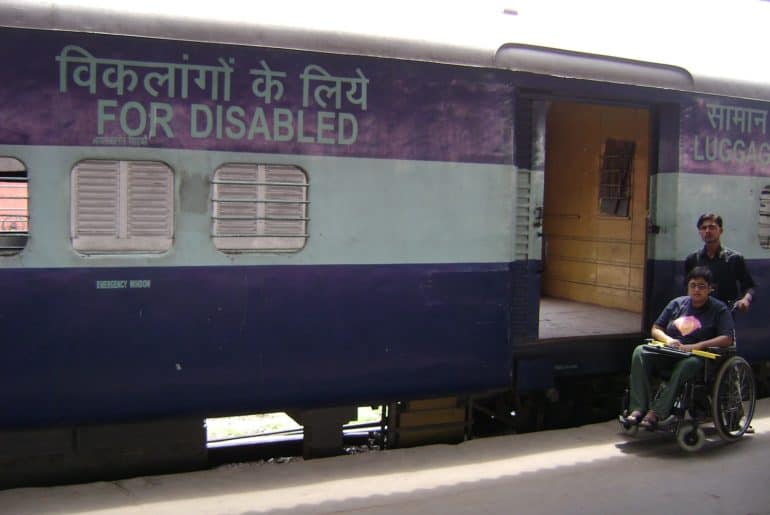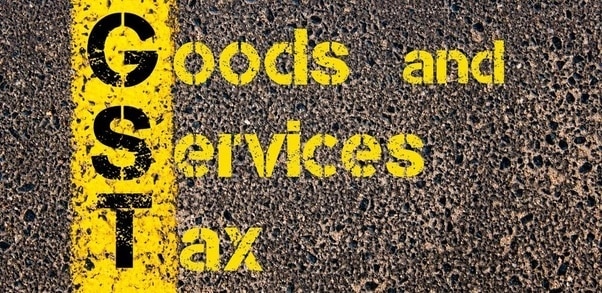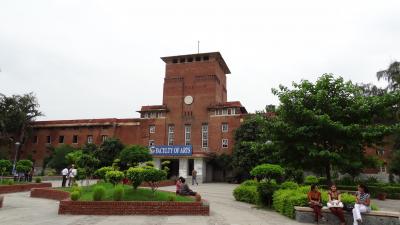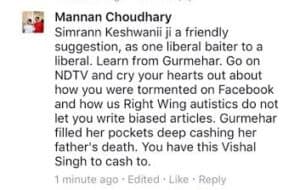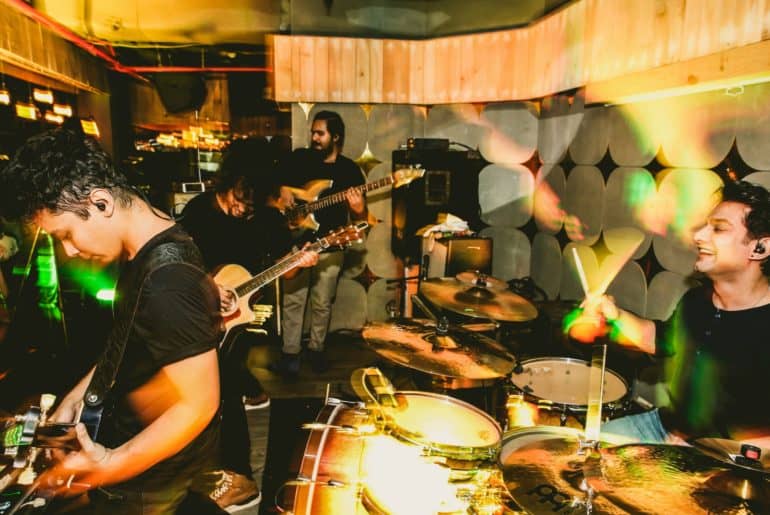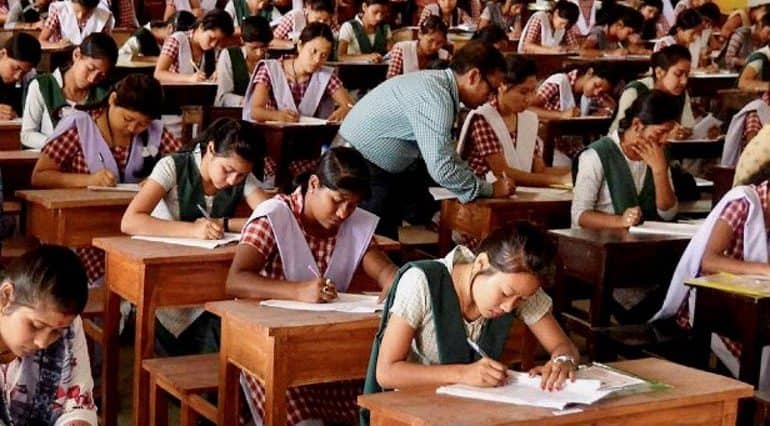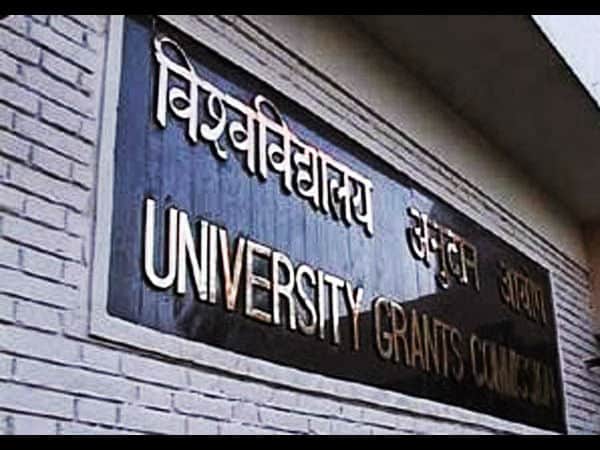In a country where the music industry focuses on making party songs with arbitrary lyrics, The Local Train is a refreshing change. The band started out in 2008, and has only gotten more and more successful since its inception, with a huge fan following that love the artists for their out of the ordinary music. We got a chance to chat with them before their gig at Farzi Café, CP about their upcoming album. Here are some excerpts:
Your song Khudi is a juxtaposition between reality and dreams, what is the message behind the song?
Paras: I think the purpose of the song is very clear in the video. Like if you daydream, and ultimately you fight for it, and then you get it. That’s what the video is about, and the song is on similar lines.
Raman: The song is about everybody who is fighting to get something, or fighting for following what they want to do. It is basically about finding your true calling, basically and Khudi as a concept means ‘self-actualisation’and that’s what it is. You figure out what you want to do and actually go ahead with it. We’re just really glad that people relate to the song.
Tell us about your upcoming album that is releasing in September. Have you guys decided on a name yet?
Paras: No, no. We haven’t locked down on one single name yet. I think we’ve written five songs and then we have 3-4 more songs to go. We’ll have a clearer idea where we’re headed in totality with this album, and then we’ll bounce off a few names again. We have a lot of ideas written down and a lot of thought are going to come in now, so we are not following one set theme.
Raman: We don’t have a general concept for anything, we just keep writing songs, like we keep playing them. I think we’ve rejected more songs then the songs that are already made it to the album which is something we’ve never done before. I think the general idea would be that we’re just writing songs because we are also going through a lot of stuff as a band, and not a lot of infra there in the country to supoort band music. There is Khudi, then there’s one that we just finished called Mere Yaar, then there is song about non-believers, there is a song about traditions that don’t make sense anymore in the modern world, there’s one about two-faced people, called Dil Nawaaz.
Your music videos frequently feature aspiring artists and unexplored talent like Ryan Matyr in Jiyen Kyun, Faizan Th in Yeh Zindagi Hai and Arjun Mathur in Khudi. Is there a reason behind this or is it unintentional?
Raman: Gareeb hi gareeb ko samajh sakta hai.
Paras: Just to clarify, Arjun Mathur is not an underground talent. He is out there and he has done more things than we have. Other than that, we have always felt that is it more important to hang out with like-minded people and it would be more fun to work with them.
Raman: And we’re very glad that whatever we’ve done, with Ryan, with Faizan, and now with Arjun, all the things have worked in their own space very nicely. Which makes us believe that we should keep doing it, like go and look for people who are doing good stuff and then ask them like ‘Hey man, you want to collaborate?’ because it is a collaboration, if you really look at it, between the band and the director and the producer and the talent that is in the video.
Ramit: We have always believed in working with people that we connect with and that we like, and they need to like us back. We need to have the same thought process, we need to be looking at the same things.
Paras: I mean, that being said, we’re not closed to working with stars. If tomorrow Deepika Padukone calls, I am not going to say no.
You guys released your first album in 2015, but you’ve been a part of this industry for a long time now. Do you feel like there is a lack of investment when it comes to indie music?
Ramit: Yes, definitely. It is a cottage industry still. It is in the metros but it is still a cottage industry!
Paras: That’s a very good analogy!
Raman: There is a lot of talent in this country, a lot of kick-ass bands in the country. But the problem is that people are more interested in Bollywood music because it gets them more money. If you’re an independent band, you really have to figure out on your own, because we work as a mini label only. We write our own music, we produce our own music, there’s no one putting money behind us. Because all the money that we go and make in our shows, we put that money on music and videos. And we run it like a label, like we release our singles, we plan our tours out, we plan our gigs out. And I think, that is the only option an independent band has.
Paras: A lot of people think that, ‘Oh! Your life must be so chill, you don’t have a day job’ but it is not a just a day job, it is a day and night job. It is a full-time job, because after you’ve made the music, what do you do? You have to take it out somehow, you have to tour the country, you have to go door to door.
Your song Aaoge Tum Kabhi was featured in the movie, Angry Indian Goddesses. Do you feel that as a band it is important to be featured in mainstream media?
Paras: I think it is important to find an audience, it doesn’t matter how you get to them, through a movie or through whatever. It is important to find your audience and the people who are going to like you for what you do. And we have always made exactly what we wanted to make.
Sahil: The song, exactly how it was released, that’s how it has gone on the movie as well.
Raman: And that’s why we respect the team of AIG, because they fought for our cause and a lot of things.
Do you feel mainstream music curbs creative freedom for aspiring musicians?
Raman: It couldn’t curb our freedom. If you’re true to yourself and you know that this is going to work and you’re honest, then it is going to work. Nobody is going to curb it.
Ramit: If somebody wants to use that as an excuse, then they are more than welcome.
Paras: I don’t think we should generalize it like that. It all depends on who you’re working with in the industry. Like, as long as we have our creative freedom, we don’t mind working with Bollywood. As long as they don’t was us to do a Holi song in March. They will curb your creativity if you let them, basically.
Delhi University is a house to budding talent and music societies and they contribute to DU’s vibrant culture. So what would be your message to these aspiring artists?
Paras: Brace yourselves, guys.
Raman: As a band, the four of us, we run our lives as a school of learning. If you’re always learning and if you’re true to yourself, you are going to get somewhere. Just try to gather as much as you can, the world has changed, the time has changed, the dynamics of the industry has changed and music also has changed. So you really have to be aware about what is good for you and what is not, like a small thing can be fruitful for a very short period of time. Like, for the four of us, our calling is to make our own music.
Paras: And creatively, please don’t try to sound like somebody else. Try and be as original as possible. Sound exactly like yourself, because no one else can sound like you and that’s very important. Our true calling is that we really like creating music. And that is the only thing that has worked in our favour. So please, focus on creating original content and no matter how good or bad that is, you can never out a price on it. It is yours.
Image Credits: Nischay Chabra
Anagha Rakta
[email protected]
Srivedant Kar
[email protected]

